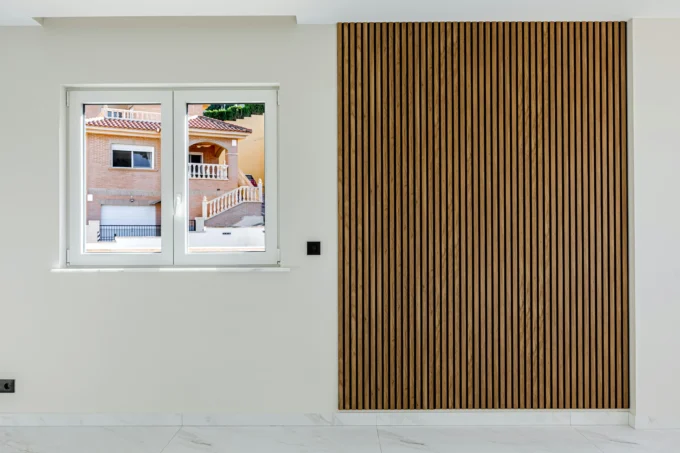- Home
- Articles
- Architectural Portfolio
- Architectral Presentation
- Inspirational Stories
- Architecture News
- Visualization
- BIM Industry
- Facade Design
- Parametric Design
- Career
- Landscape Architecture
- Construction
- Artificial Intelligence
- Sketching
- Design Softwares
- Diagrams
- Writing
- Architectural Tips
- Sustainability
- Courses
- Concept
- Technology
- History & Heritage
- Future of Architecture
- Guides & How-To
- Art & Culture
- Projects
- Interior Design
- Competitions
- Jobs
- Store
- Tools
- More
- Home
- Articles
- Architectural Portfolio
- Architectral Presentation
- Inspirational Stories
- Architecture News
- Visualization
- BIM Industry
- Facade Design
- Parametric Design
- Career
- Landscape Architecture
- Construction
- Artificial Intelligence
- Sketching
- Design Softwares
- Diagrams
- Writing
- Architectural Tips
- Sustainability
- Courses
- Concept
- Technology
- History & Heritage
- Future of Architecture
- Guides & How-To
- Art & Culture
- Projects
- Interior Design
- Competitions
- Jobs
- Store
- Tools
- More
Open-Source Software for Architectural Design: Pros and Cons

It’s often hard to find the perfect software solution for your work. Architectural design specialists usually hesitate about which option to choose. Traditionally, proprietary software has been dominant in this field. However, it has certain limitations and high licensing fees. So, the open-source alternative is becoming more popular. It’s much more versatile and budget-friendly.
What are the advantages and drawbacks of this software solution? We’ll explain it all, so keep reading!
Table of Contents
ToggleAll about Open-Source Software
First, let us describe the concept of OSS. Anyone can view and modify the source code of this software. It focuses on transparency and community-driven development. This open access encourages collaboration and rapid improvement across industries.
We gathered the main principles of OSS. Check them out below!
Transparency
As we’ve noted above, the source code is publicly available. Anyone with technical knowledge can examine and improve it. So, all the users can fully explore how the software operates internally. This transparency allows everyone to identify bugs and any inefficiencies.
Open Licensing
Open-source software is distributed under specific licenses. They dictate how you can use and share it. The most common alternative is the General Public License. It ensures that any modifications of the software must also remain open-source.
Distributed Development
Open-source projects usually rely on decentralized development. Specialists worldwide can collaborate on them without being part of the same organization.

They offer version control systems. They will help you maintain a consistent version of the project by managing changes.
Benefits of Open-Source Software for Architectural Design
You already understand how OSS works. Now, we want to focus on its role in the architectural design niche. It’s particularly useful for smaller agencies and freelance professionals. We gathered the biggest pros of this software solution in this field.
Cost-Effectiveness
One of the most appealing aspects of OSS for architects is its cost-effectiveness. It is typically free to download and use. So, you won’t need to pay extra for expensive licensing fees.
Also, you can use all of its functionalities without recurring costs. You can access all the newest updates and improvements. That way, you’ll have the necessary tools without additional investments.
Plus, OSS has lower maintenance costs, because of the community support. It offers extensive documentation and shared resources. All of this reduces the need for costly customer support.
These substantial savings allow you to redirect your resources to other critical areas. Plus, it will be easier for you to enter the market and remain competitive without this financial burden.
Customization
As we all know, architectural projects may require different design features or workflows. Open-source software provides exceptional customization options. You can modify the source code to add or remove features based on the demands of your exact project. For example, you may add specific plugins for environmental modeling or 3D modeling tools.
Also, OSS is often more compatible with other systems. You can easily integrate it with design and construction systems, like
- BIM software;
- Rendering engines;
- Structural analysis tools, etc.
You’ll have the possibility to customize the user interface as well. You can reorganize menus and shortcuts to avoid dealing with unnecessary features.
For projects requiring more advanced digital solutions, consider exploring professional web app development services. These services can help you build custom applications tailored to your specific needs, ensuring greater efficiency and integration with other tools. Whether you’re looking to enhance workflows or add specialized features, a custom web app can significantly improve your overall project management.
Collaborative Development
You can also benefit from the global contribution of this software. Architects and developers from different regions always work to improve it. So, you’ll get access to the new features and updates much faster than with traditional alternatives.
Through collaborative development, you can request or develop specific features for your project’s requirements. For instance, you can cooperate with other developers to create a certain function that isn’t available in the current version.
Plus, OSS is a great base for getting knowledge. Communities around OSS projects often share their experiences and tips. You can use it as a learning resource and improve your work.
No Vendor Lock-In
Proprietary software often locks users into a specific ecosystem. So, it’s hard for you to switch to another tool once you’re invested. You’ll have to continually pay for upgrades.
Open-source option eliminates vendor lock-in. It gives you the freedom to choose how to use and modify the software. You can export and manage your data in open formats. That way, you can ensure compatibility with other tools you have. This independence allows you to have full control over your project files, without being tied to a single provider.
Interoperability
You often have to partner with other professionals when working on architectural design. For instance, you may have to work with engineers and consultants who may use different tools.
OSS can make this collaboration smoother. As we’ve noted above it supports open standards and file formats. This can prevent issues when exchanging files or cooperating across different programs.
For example, open-source CAD programs typically support diverse file formats. So, it’ll be easier to share models and designs with other professionals or clients, even if they use different software.
Higher Security
The last benefit we want to highlight is the security and stability OSS can offer. Anyone can inspect and analyze the code. This peer-review process can reduce the possibility of missing any vulnerabilities.
Members of the community can submit patches or fixes. It makes the process of fixing any problems much faster. It’s really important for architectural projects because they depend on safe and up-to-date tools.
Plus, OSS offers long-term stability. If the original creator is no longer involved, the community will continue to develop and support it. They will “fork” the project and create new versions.
Main Drawbacks and Concerns
We can all agree that open-source software is really beneficial in the context of architectural design. However, it has certain drawbacks as well. You have to consider them before fully committing to these tools.
Learning Complexity
Sometimes, it may be hard to use OSS if you don’t have certain technical expertise. Programmers who create architectural design tools don’t always focus on UX. So, their interface may not be as intuitive as in commercial options.
Its community-driven documentation is often less formal and full than proprietary one. You may have to rely more on a trial-and-error method, which slows the adoption process. This can be particularly challenging if you’re integrating OSS with other systems, such as telecom software development services, where user experience and seamless integration are critical.
Limited Advanced Features
OSS often lacks some advanced features that are present in proprietary software. For example, it may not include
- Advanced rendering;
- Simulation;
- Live collaboration, etc.
So, it will be challenging for you to work on large-scale or complex projects.
Inconsistent Updates
Community development is one of the biggest pros of OSS. However, it can also be a drawback. It relies on volunteers or small teams of developers who may not be able to provide timely updates. It may leave you without important security patches or functional improvements.
Lack of Formal Support
Most OSS projects don’t have formal customer support. You have to rely on forums and other users to resolve any problems. This absence of official support can become a concern, even though the OSS community is usually active. If your architectural project has tight deadlines, a lack of professional assistance may lead to costly delays.
Resistance to Adoption
Many architecture firms and professionals are used to proprietary software. So, your clients and collaborators may not accept the OSS alternative. It could complicate your workflow and make it difficult to integrate this software fully.
Examples of Open-Source Architectural Design Software
Now, that you know about the pros and cons of OSS for architectural design, we want to suggest some practical solutions. We gathered some open-source programs with strong features. Check them out below and maybe you’ll find an alternative for yourself.
FreeCAD
FreeCAD is probably the most popular open-source solution. It’s a parametric 3D modeler. It allows you to design and modify objects based on different parameters. You can extend its capabilities through plugins and customize it for your needs. Its main features are
- Parametric modeling for easy design modifications;
- BIM support;
- Exports to different formats (STL, OBJ, and DXF);
TAD
The Architect’s Desktop is an architectural design and BIM software. It focuses on the early design stages. It can help you conceptualize ideas and explore architectural forms.
This alternative is modular and extensible. So, you can easily integrate it with other workflows.

Sweet Home 3D
It is an easy-to-use interior design application. Even though its main function is home design, you can use it to create floor plans and visualize spaces in 3D. Here are a few things it can offer:
- Simple drag-and-drop interface;
- 2D and 3D views support;
- Library of pre-modeled designs.
LibreCAD
LibreCAD is a free 2D CAD application. You can use it for technical drawings of floor or site plans. It is lightweight and runs on multiple platforms. Plus, it supports standard CAD file formats, like DXF and DWG.
Conclusion
The choice of software is often a big question for architectural design specialists. The proprietary alternative is more widely accepted. However, it has some limitations, especially if you have a tight budget. So, open-source software may be more beneficial in that case.
It’s less pricey, as you don’t have to pay high licensing fees or invest extra in maintenance. It offers many customization options and support from the community. Yet, you have to weigh some of its drawbacks before making a decision. It might be hard to use if you don’t have enough technical knowledge. Plus, it may lack some advanced features and adequate updates.
We hope that our guide was useful. Consider all the pros and cons of the OSS we described and try it out. Maybe it will be a perfect solution for your architectural design projects.
Author bio:
Roy Emmerson is the co-founder of TechTimes.com, a B2B SaaS platform that helps businesses stay up-to-date on the latest technology trends. With over a decade of experience in the tech industry, Roy is a thought leader in the field and is passionate about helping companies embrace new technologies to improve their operations and drive growth.
illustrarch is your daily dose of architecture. Leading community designed for all lovers of illustration and #drawing.
Submit your architectural projects
Follow these steps for submission your project. Submission FormLatest Posts
5 Advantages of Revit Over Archicad
Choosing the right BIM software can shape the efficiency and success of...
10 Best Architecture Tools of 2026: Programs, AI, and iPad Apps
A comprehensive guide to the most influential architecture tools and AI platforms...
Best Architectural Software for Students in 2025
In 2025, digital tools aren’t just convenient — they’re essential to learning,...
Beginner’s Guide to Arcadium 3D: Your First Room Design in 5 Easy Steps
Designing a room used to mean wrestling with tape measures, mood boards,...












Leave a comment